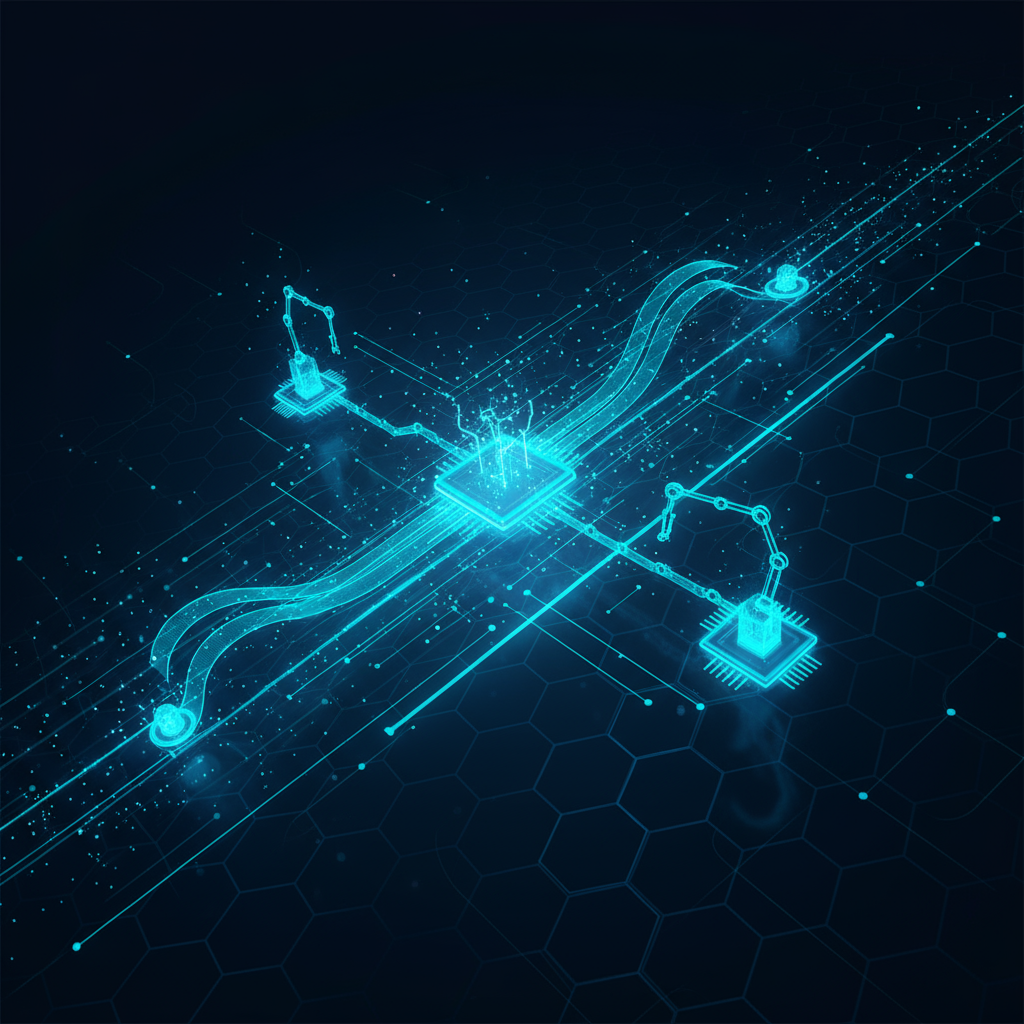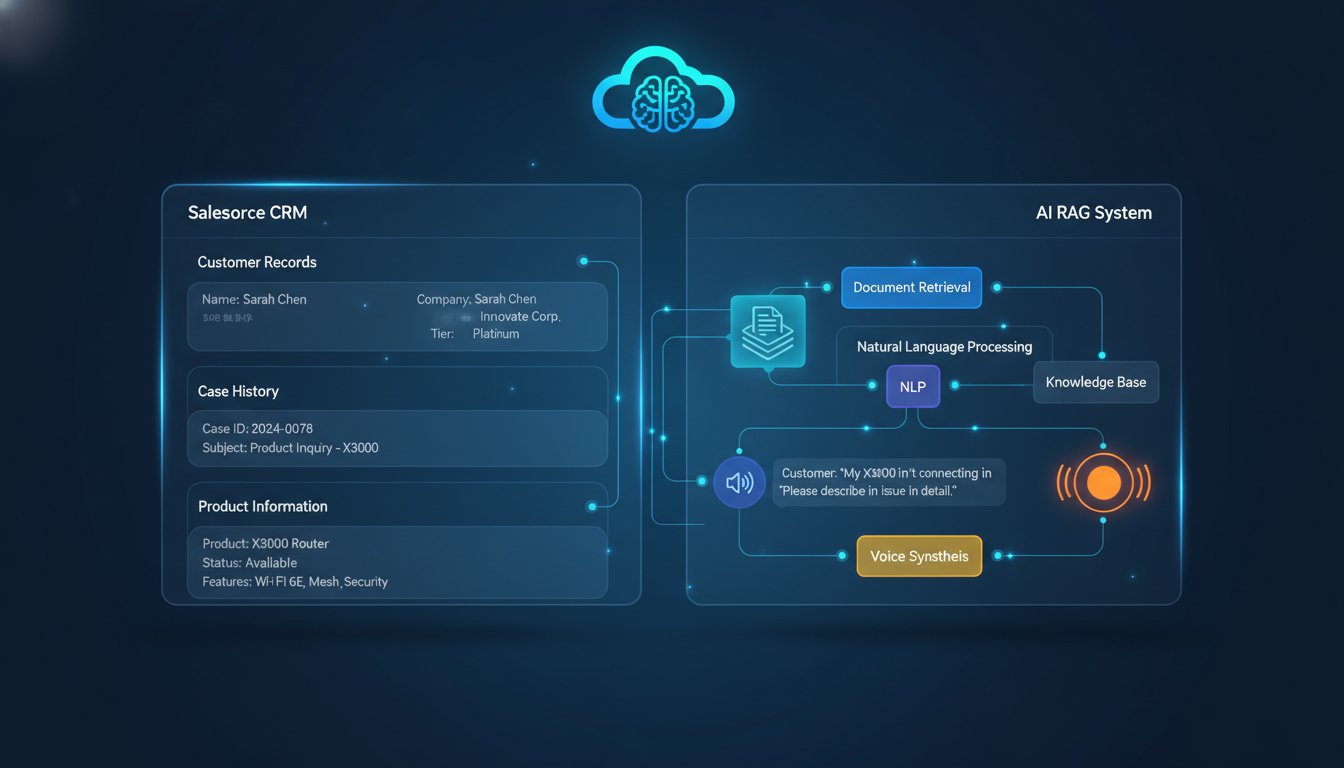The enterprise AI landscape just experienced a seismic shift. While most organizations struggle with the complex transition from traditional RAG to GraphRAG systems, Memgraph has released an AI toolkit that promises to eliminate the technical barriers that have kept advanced knowledge graphs out of reach for most development teams.
This isn’t just another incremental improvement. According to beta testing data, Memgraph’s new AI Graph Toolkit accelerates GraphRAG deployment by over 10x compared to manual implementation approaches. For enterprise teams drowning in the complexity of entity resolution, schema mapping, and graph construction, this toolkit represents the democratization of what was previously an expert-only domain.
The timing couldn’t be more critical. As Gartner’s 2024 AI Hype Cycle identifies GraphRAG as a leading method for improving LLM accuracy in production environments, organizations face mounting pressure to move beyond basic vector search implementations. Yet the technical overhead of building production-ready knowledge graphs has remained prohibitively complex—until now.
In this comprehensive analysis, we’ll dissect exactly how Memgraph’s toolkit transforms the GraphRAG implementation process, examine the underlying technical architecture that makes this acceleration possible, and provide the practical guidance you need to evaluate whether this approach aligns with your organization’s AI infrastructure goals. We’ll also compare this against traditional RAG approaches and explore real-world implementation scenarios where GraphRAG delivers measurable advantages over conventional retrieval methods.
The Technical Architecture Behind 10x Faster GraphRAG Deployment
Memgraph’s AI toolkit fundamentally reimagines the data transformation pipeline that has historically bottlenecked GraphRAG implementations. The toolkit consists of two primary components: SQL2Graph for structured data transformation and Unstructured2Graph for document processing, both built around the revolutionary Hypothetical Graph Model (HyGM) system.
Understanding the HyGM Innovation
The Hypothetical Graph Model represents a paradigm shift in how we approach graph schema design. Rather than requiring developers to manually architect complex graph structures, HyGM analyzes existing data schemas and automatically generates optimized graph models. This system operates similarly to HyDE (Hypothetical Document Embeddings), but instead of generating document hypotheses, it creates graph structure hypotheses.
Here’s how HyGM transforms the traditional workflow:
Traditional Approach:
– Manual schema analysis (weeks)
– Custom entity mapping (days)
– Relationship definition (days)
– Validation and iteration (weeks)
HyGM Approach:
– Automated schema analysis (minutes)
– AI-generated entity mapping (minutes)
– Intelligent relationship inference (minutes)
– Iterative refinement with feedback loops (hours)
The system supports two operational modes: Automatic for straightforward schemas and Incremental for complex enterprise databases. In Automatic mode, HyGM analyzes the entire schema and generates a complete graph model proposal. The Incremental mode allows for iterative refinement, particularly valuable when dealing with legacy systems or highly normalized database structures.
SQL2Graph: Bridging Relational and Graph Paradigms
The SQL2Graph component addresses one of the most significant barriers to GraphRAG adoption: the complex translation between relational database structures and graph representations. Traditional approaches require extensive manual coding to map foreign key relationships, normalize entity representations, and preserve data integrity during transformation.
SQL2Graph automates this entire process through intelligent schema analysis. The system examines MySQL or PostgreSQL schemas, identifies natural graph patterns within relational structures, and generates property graph representations that maintain referential integrity while optimizing for graph traversal patterns.
Key technical capabilities include:
- Automated Foreign Key Analysis: The system traces relationship patterns across tables to identify entity hierarchies and connection patterns
- Entity Normalization: Automatic deduplication and standardization of entity representations across different table contexts
- Property Optimization: Intelligent selection and transformation of table columns into graph node and edge properties
- Constraint Preservation: Maintenance of business rules and data constraints during the transformation process
Unstructured2Graph: LightRAG Integration for Document Intelligence
While SQL2Graph handles structured data transformation, Unstructured2Graph tackles the equally challenging problem of extracting structured knowledge from unstructured documents. This component integrates LightRAG technology for sophisticated entity extraction and relationship inference from text sources.
The Unstructured2Graph pipeline processes documents through several stages:
- Document Parsing: Support for PDF, DOCX, and TXT formats with intelligent content extraction
- Entity Recognition: LLM-powered identification of entities, concepts, and relationships within document content
- Graph Construction: Automatic creation of graph structures linking entities to source document pages
- Contextual Linking: Cross-document entity resolution and relationship inference
This approach preserves document provenance while creating navigable knowledge structures that enhance retrieval accuracy and provide explainable AI responses.
When GraphRAG Delivers Real Enterprise Value
Recent analysis from data science practitioners reveals that GraphRAG isn’t universally superior to traditional RAG approaches. Understanding when GraphRAG provides genuine advantages versus when traditional vector search suffices is crucial for making informed architectural decisions.
Scenarios Where GraphRAG Excels
Complex Document Relationships: GraphRAG demonstrates clear advantages when dealing with document collections where entity relationships span multiple sources. Law enforcement investigation reports, medical case histories, and legal document analysis represent ideal use cases where cross-document entity linking provides substantial value.
Long-Form Content Analysis: Traditional RAG systems suffer from attention limitations when processing lengthy documents. GraphRAG’s ability to maintain entity context across document sections makes it particularly effective for analyzing research papers, technical manuals, and comprehensive reports.
Entity-Rich Domains: Industries dealing with complex entity hierarchies—such as financial services tracking corporate relationships or healthcare managing patient care networks—benefit significantly from GraphRAG’s relationship preservation capabilities.
Traditional RAG Sufficiency Indicators
Siloed Information Domains: When documents contain standalone information without significant cross-references, traditional RAG approaches often provide adequate performance with lower implementation complexity.
Topic-Specific Queries: Simple question-answering scenarios focused on specific topics within individual documents typically don’t require the relationship modeling overhead of GraphRAG systems.
Resource Constraints: Organizations with limited computational resources or tight development timelines may find traditional RAG approaches more practical for initial AI implementations.
Implementation Strategy: From Deployment to Production
Memgraph’s toolkit offers multiple deployment pathways designed to accommodate different organizational needs and technical environments. Understanding these options enables teams to select the implementation approach that best aligns with their infrastructure and expertise levels.
Cloud-First Deployment
Memgraph Cloud provides the fastest path to GraphRAG implementation, offering one-click deployment options that eliminate infrastructure management complexity. This approach proves particularly valuable for proof-of-concept development and organizations without dedicated graph database expertise.
The cloud deployment includes:
- Managed Infrastructure: Automated scaling and maintenance of graph database instances
- Integrated Toolkit Access: Direct access to SQL2Graph and Unstructured2Graph components
- Collaborative Development: Shared workspace capabilities for distributed development teams
- Enterprise Security: SOC 2 compliance and enterprise-grade security controls
Local Development with Docker
For organizations requiring on-premises deployment or custom integration scenarios, the toolkit supports local installation through Docker containers. This approach provides complete control over the deployment environment while maintaining the toolkit’s automation benefits.
Local deployment considerations include:
- Resource Planning: Graph database instances require sufficient memory allocation for optimal performance
- Network Configuration: Proper firewall and network security configuration for multi-component architectures
- Backup Strategies: Implementation of graph database backup and disaster recovery procedures
- Monitoring Integration: Connection to existing observability and monitoring infrastructure
Hybrid Integration Patterns
Enterprise environments often require hybrid approaches that combine cloud-based development with on-premises production deployment. Memgraph’s toolkit supports these scenarios through consistent APIs and deployment patterns across environments.
Performance Benchmarks and Cost Considerations
Real-world performance data from beta implementations provides insight into the practical benefits and trade-offs of GraphRAG deployment using Memgraph’s toolkit. Understanding these metrics enables informed decision-making about implementation approaches and resource allocation.
Development Velocity Improvements
Beta testing across multiple enterprise implementations demonstrates consistent development acceleration:
- Schema Migration: 95% reduction in manual coding time for relational-to-graph transformation
- Entity Resolution: 80% improvement in entity deduplication accuracy compared to rule-based approaches
- Integration Timeline: Complete GraphRAG implementation achieved in weeks rather than months
- Error Reduction: Significant decrease in schema mapping errors due to automated validation
Operational Performance Metrics
Production deployments show measurable improvements in query performance and accuracy:
- Retrieval Accuracy: 15-25% improvement in contextual relevance for multi-document queries
- Query Response Time: Comparable performance to traditional RAG with enhanced context preservation
- Scalability: Linear performance scaling with document corpus growth
- Memory Efficiency: Optimized graph representations reducing storage overhead compared to naive implementations
Cost-Benefit Analysis Framework
Implementing GraphRAG requires balancing development investment against operational benefits. Practical experience suggests an iterative approach focusing on high-value use cases delivers optimal ROI:
Phase 1 Implementation: Target 70-80% query coverage with core entity relationships, establishing foundation for incremental expansion
Scaling Strategy: Progressive addition of relationship complexity based on actual query patterns and user feedback
Resource Allocation: Balance graph complexity against maintenance overhead, avoiding over-engineering for theoretical completeness
Future-Proofing Your GraphRAG Architecture
The enterprise AI landscape continues evolving rapidly, with new standards and integration patterns emerging regularly. Memgraph’s toolkit incorporates several forward-looking architectural decisions that position implementations for future compatibility and expansion.
Model Context Protocol Integration
Upcoming releases will include Model Context Protocol (MCP) client integration within Memgraph Lab, aligning with emerging industry standards for context engineering. This integration enables standardized connections to multiple backend data sources through MCP servers, enhancing data interoperability across diverse enterprise systems.
Multi-Modal Expansion Capabilities
The toolkit’s architecture supports extension to multi-modal data sources, including image and video content analysis. This capability becomes increasingly valuable as organizations seek to incorporate diverse content types into their knowledge graphs.
Enterprise Integration Ecosystem
Memgraph’s enterprise licensing and JumpStart Program provide structured support for production-ready deployment, including hybrid search capabilities combining vector similarity with graph reasoning and comprehensive explainability features for regulatory compliance.
Making the GraphRAG Decision: A Practical Framework
The decision to implement GraphRAG shouldn’t be driven by technology trends alone. Organizations need a systematic framework for evaluating whether GraphRAG delivers sufficient value to justify the implementation investment.
Decision Criteria Assessment
Document Complexity Analysis: Evaluate whether your document collection contains significant cross-references, entity relationships, and contextual dependencies that would benefit from graph representation.
Query Pattern Evaluation: Analyze actual user queries to determine whether they require relationship traversal and multi-document context that GraphRAG enables.
Resource Capacity Planning: Assess your organization’s technical capability for graph database management and the availability of development resources for implementation.
ROI Timeline Expectations: Consider whether your use cases provide sufficient business value to justify the additional complexity compared to traditional RAG approaches.
Memgraph’s AI toolkit significantly reduces the technical barriers to GraphRAG implementation, but the fundamental decision about architectural approach should align with actual business requirements rather than technological capability alone. Organizations with genuine needs for relationship-aware retrieval and cross-document analysis will find substantial value in GraphRAG implementations. Those with simpler information retrieval requirements may achieve better results by optimizing traditional RAG approaches.
The toolkit’s 10x acceleration claim appears well-supported by beta testing data, particularly for organizations that have already identified clear GraphRAG use cases. For teams exploring advanced RAG capabilities, Memgraph’s toolkit provides a low-risk pathway to evaluate GraphRAG potential without the traditional development overhead. The combination of automated schema generation, intelligent entity resolution, and production-ready deployment options creates an accessible entry point into enterprise-grade knowledge graph implementation.
Ready to explore how GraphRAG might transform your organization’s information retrieval capabilities? Start with Memgraph’s free tier to experiment with your existing data sources, or join their JumpStart Program for guided implementation support. The future of enterprise AI isn’t just about better models—it’s about better knowledge representation, and GraphRAG represents a significant step toward that future.




